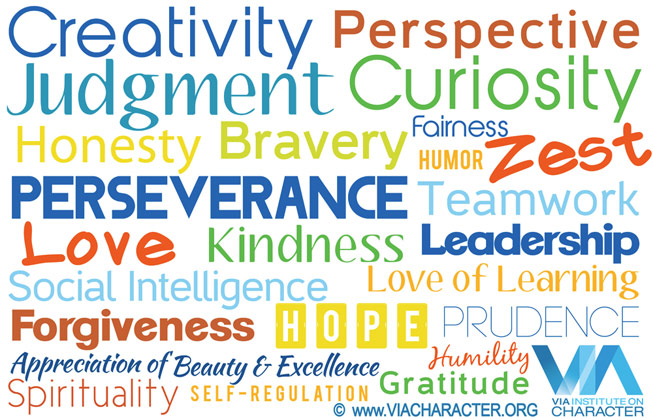If you’ve been around awhile, like I have, you’ll probably remember Bobby McFerrin’s 1988 award-winning hit song, “Don’t Worry, Be Happy.” It’s also known among younger generations. Bobby McFerrin is famous for his a cappella songs. He gave a popular TED talk at the World Science Festival in 2009 in which he turned the whole audience into his musical accompaniment using just their voices.
The TED talk offers a clear example of someone in “the strengths zone” doing what he does best and being his most authentic. I sometimes use it in presentations to introduce strengths-spotting. Strengths-spotting is a powerful practice that helps us focus on the good and see ourselves and others through a lens of what’s strong, rather than blame or what’s wrong.
One of the best gifts you can give throughout the day is strengths-spotting. It’s easy and intuitive to do. Find out why and how below, then practice strengths-spotting in your own work or life.

Strengths-spotting is a gift we all deserve to receive more often, especially when confronted with times of high anxiety. This practice is about naming and valuing character strengths in each other, elevating who we are and what we do best. When someone else notices and values you for these qualities, you get the added bonus of feeling seen and understood for who you are. It’s like looking through a magnifying glass, where the image on the other side suddenly becomes clear and true to its nature.
Participants consistently highlight strengths-spotting as a practice that changed their lives the most. They cited improvements in difficult relationships, boosting teamwork, and elevating confidence.
You can practice strengths-spotting each day, no matter the circumstances. You can apply this practice in a family, work, or social setting. You can also practice it with acquaintances and people you just met, like the cashier at the grocery store, or your favorite movie or book characters. You can even practice it with that person that constantly rubs you the wrong way.
To easily learn and practice strengths-spotting, Dr. Ryan Niemiec, education director at the VIA Institute on Character, suggests using the SEA approach (spot, explain, appreciate).
- First, pause to notice and name the strengths you see. In other words, spot them in action. This can be within yourself or others around you – your kids who picked up their toys without being asked (kindness) or your co-worker who supported your idea even though others didn’t (bravery).
- Next, explain the details or context in which you spotted the strengths in action. What was the person doing? Who were they with? What was happening?
- Last, describe the impression this person’s strengths left on the situation at hand, on others, or you. Why did you appreciate the use of these strengths? How did this person’s strengths create a positive result or affect you personally?
The Inspiration
It’s always nice to have someone recognize you for a positive contribution you’ve made. For example “Jane, that blog post was really creative.” But it’s a richer experience when put into context and made personal.
“Jane, your creative blog post on The Mindful Pause gave me an easy but powerful tool I’ve shared with clients and friends. I also use it throughout the day to reduce anxiety. It helps me face what’s next with clarity.” It feels so good to hear about the impact I had on someone using my top strength creativity in my work!
Most people find spotting other people’s strengths to be quite intuitive. Naming our own strengths, however, is a bit more difficult. Many of us don’t feel comfortable describing ourselves in positive ways. Others don’t have the language to describe our positive traits. For some, the discomfort is grounded in cultural norms. This requires a deeper discussion, but I’ve helped clients successfully integrate strengths practices into groups of people with cultural sensitivities.
Another challenge arises when someone in your life constantly tests your patience – that relative who gossips about family members or the co-worker who never seems prepared for the Zoom calls. Guess what? They have character strengths, too! Can you acknowledge them for their strengths?
Remember that strengths-spotting is a practice that can be practiced. Over time, you will become more effective and comfortable strengths-spotting yourself and others. Are you ready to practice? Follow the simple SEA approach below.
The Practice
- Watch this 3-minute clip of Bobby McFerrin’s 2009 TED talk.
- Write down all the character strengths you see in Bobby, the gentlemen behind him, or the audience before him. Try to spot all 24. Below is an aid to remind you of the 24 character strengths. Practice with your family or team if you like. Up the ante, and create a reward for the person who spots the most strengths.
- Use the SEA approach to spot, explain, and appreciate the strengths.
- Next, apply the SEA approach to a personal situation in which you are interacting with your team, family, or others as you are out and about in your day.

The Reflection
As I practiced strengths-spotting, I noticed that _____________________________.
What did you notice about shifts within yourself – what you were thinking, feeling, or doing? What did you notice about others or how the situation shifted?
Feel free to record your thoughts in a journal, allowing them to flow freely without editing or evaluating, or speak with a trusted friend or colleague to debrief your reflection.
May you “SEA” a new perspective as you practice strengths-spotting today!
Jane




